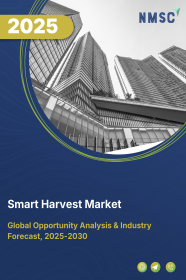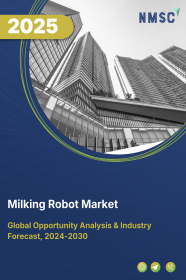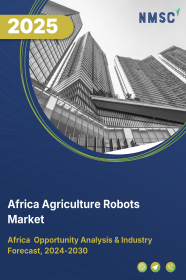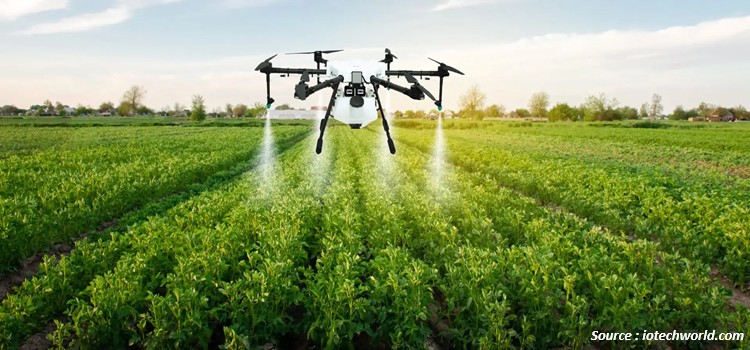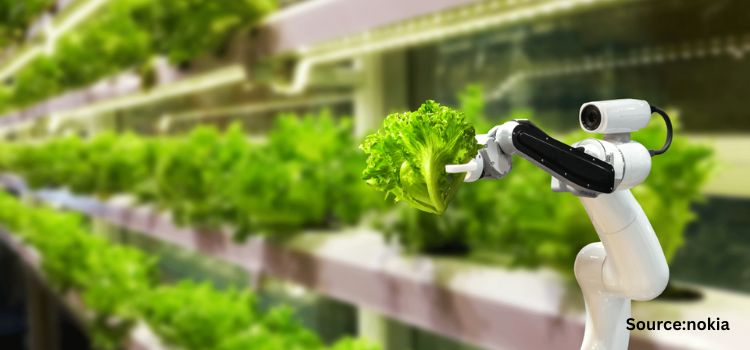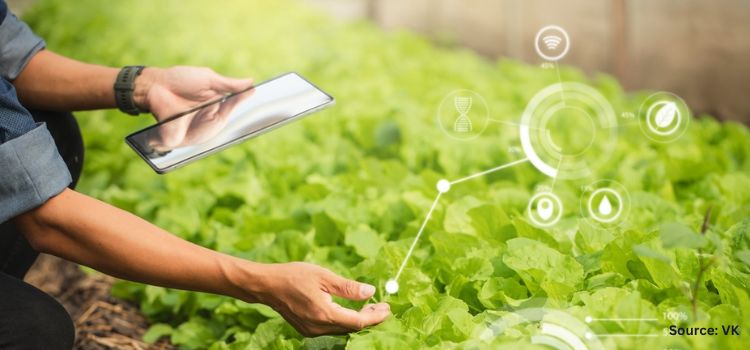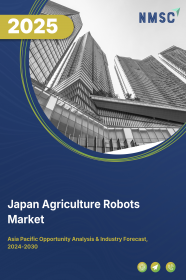
Japan Agriculture Robots Market by Type (Driverless Tractors, Unmanned Aerial Vehicles (UAVs), Milking Robots, Automated Harvest Robots, and Others), Offering (Hardware, Software, and Services), Farming Type (Indoor Farming and Outdoor Farming), Application (Dairy Management, Irrigation Management, Harvest Management, Soil Management, Inventory Management, and Others), and End User (Field Crops, Fruits & Vegetables, Livestock, and Others) – Opportunity Analysis and Industry Forecast 2023–2030
Industry: Agriculture | Publish Date: 14-Feb-2025 | No of Pages: 88 | No. of Tables: 73 | No. of Figures: 31 | Format: PDF | Report Code : AG632
US Tariff Impact on Japan Agriculture Robots Market
Trump Tariffs Are Reshaping Global Business
Market Overview
Japan Agriculture Robots Market size was valued at USD 238.73 million in 2022, and is predicted to reach USD 846.77 million by 2030, with a CAGR of 16.0% during the forecast period, 2023–2030. Agricultural robots are machines that use advanced technology to perform tasks in farming, such as planting, harvesting, monitoring, and spraying crops. They are designed to improve efficiency, production, and precision in agriculture, while reducing the need for manual labor and improving the working conditions of farmers.
Agribots are sophisticated robots that use sensors, actuators, and algorithms to sense their surroundings, make decisions, and perform tasks. They use GPS or mapping technology to navigate through fields and perform a variety of agricultural activities, such as planting seeds, harvesting crops, applying pesticides or fertilizers, and monitoring crop health. They use computer vision technology to identify crops and weeds, detect pests and diseases, and take precise actions based on the information they gather
Japan Addressing Labor Shortage Through Agricultural Robots
Japan is one of the leading countries globally in terms of high adoption of agricultural robots. One of the major drivers of the agricultural robot’s market in Japan is the increasing shortage of manual labor in the agriculture sector. With a rapidly aging population and declining birth rate, there are fewer workers available to perform manual tasks such as planting seeds, harvesting crops, and weeding. According to the 2020 Census of Agriculture and Forestry in Japan, there has been a 20 percent decline in the number of agricultural workers in five years, with 1.52 million workers recorded in 2020 compared to 1.97 million in 2015. This has led to a growing demand for automated solutions such as robots that can help farmers improve efficiency and reduce the need for manual labor.
Government Initiatives Driving Adoption of Agriculture Robots in Japan
The government of Japan is taking several initiatives to increase the adoption of agriculture robots in the country. For instance, in 2020, the Ministry of Agriculture, Forestry, and Fisheries (MAFF) of Japan announced a basic plan that aims to improve the nation’s capacity for food self-sufficiency and establish its food security. To achieve this goal, MAFF has been taking several measures, including smart agriculture. For example, the use of technologies such as drones, robots, and a public platform for agricultural data collection has been promoted to save labour and cut production costs.
Financial Barriers Impeding Widespread Adoption of Agricultural Robots in Japan
One of the significant restraints for the adoption of agricultural robots in Japan is the high initial investment required. The cost of acquiring, integrating, and maintaining advanced robotic systems can be substantial, especially for small-scale farmers or those with limited financial resources. The upfront expenses associated with purchasing the necessary technology and equipment, as well as training personnel to operate and maintain the robots, can pose a financial barrier for many farmers. This financial constraint limits the widespread adoption of agriculture robots and is expected to restrain the growth of the market.
Revolutionizing Precision Farming through Advanced Agriculture Robots in Japan
Adoption of agriculture robots equipped with advanced sensing technologies and data analytics capabilities can revolutionize precision farming in Japan. These robots can collect real-time data on soil conditions, crop health, and environmental factors. By analyzing this data, farmers can make data-driven decisions, optimize resource allocation, and implement precise interventions such as targeted spraying, irrigation, and fertilization. Precision farming enabled by agriculture robots can improve crop yields, reduce resource waste, and enhance overall sustainability. Thus, creating ample opportunity for agriculture robots within the country.
Competitive Landscape
The Agriculture Robots industry includes several market players such as Spread Corporation, Teikoku Toyo Saw Co., Ltd., Yokohama Rubber Co., Ltd., Kubota Corporation, Mitsubishi Heavy Industries, Ltd., Daikin Industries, Ltd., Inaho Corporation, Asaka Works, Ltd., DENSO Corporation, and Nippon Seiki Co., Ltd.
Key Benefits
-
The Japan agriculture robots market report provides a quantitative analysis of the current market and estimations through 2023-2030 that assists in identifying the prevailing market opportunities to capitalize on.
-
The study comprises a deep dive analysis of the market trend including the current and future trends for depicting the prevalent investment pockets in the market.
-
The information related to key drivers, restraints, and opportunities and their impact on the market is provided in the report.
-
The competitive analysis of the market players along with their market share in the Japan agriculture robots market.
-
The SWOT analysis and Porter’s Five Forces model are elaborated in the study.
-
Value chain analysis in the market study provides a clear picture of the stakeholders’ roles.
Japan Agriculture Robots Market Key Segments
By Component
-
Driverless Tractors
-
Unmanned Aerial Vehicles (UAVs)
-
Milking Robots
-
Automated Harvest Robots
-
Others
By Offering
-
Hardware
-
Software
-
Services
By Farming Type
-
Indoor Farming
-
Outdoor Farming
By Application
-
Dairy Management
-
Irrigation Management
-
Harvest Management
-
Soil Management
-
Inventory Management
-
Others
By End User
-
Field Crops
-
Fruits & Vegetables
-
Livestock
-
Others
Key Players
-
GEA Group
-
CNH Industrial
-
Delaval
-
Deere & Company
-
AGCO Corporation
-
Trimble Inc.
-
Naio Technologies
-
Yanmar Holdings Co. Ltd.
-
SZ DJI Technology Co. Ltd.
-
Boumatic
-
Harvest Automation Inc
-
Autonomous Solution Inc
-
Clearpath Robotics
-
Ageagle Aerial System
-
Kubota Corporation

















 Speak to Our Analyst
Speak to Our Analyst



